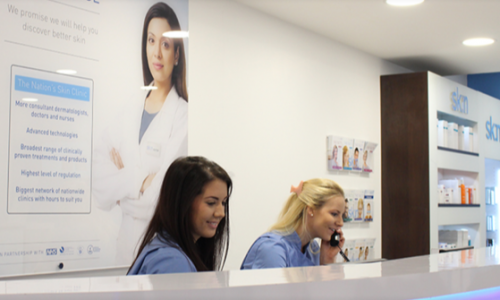What happens during a skin cancer screening?

What happens during a skin cancer screening?
The aim of skin cancer screening is to identify pre-malignant and malignant lesions early on in their development so that treatment can be offered earlier, and prognosis can be improved as much as possible.
Skin self-examination is a simple and convenient method of at-home skin cancer screening that is associated with early detection and decreased rates of late presentation melanoma. Although valuable, many people aren’t able to recognise the features of moles and other skin lesions that necessitate further investigation. Also most people do not perform self-examination regularly enough or have the confidence to do it.
You can read more about recognising cancerous moles here.
The reassuring news is that you don’t need to rely on self-examination to detect potentially cancerous moles. This is where seeing an expert for skin cancer screening is the most reliable course of action.
Why should I start skin cancer screening?
In the UK the risk of melanoma increases with age however the the number of cases diagnosed in young people is disproportionately high. In fact melanoma is the most common cancer in people aged 15-34.
If you are exposed to the sun regularly, have a family history of skin cancer, have atypical mole syndrome or other predispositions that increase your risk of developing skin cancer, you should strongly consider skin cancer screening.
Are there different skin cancer screening options?
Depending on your concerns and desired outcome, there are a range of options that allow your screening experience to be tailored to you. At the beginning of any skin cancer screening procedure, a specialist nurse will explore your medical history and identify any factors that might affect your susceptibility to skin cancer.
If you are concerned about one or two moles specifically, a Mole Diagnostic Report provides a fast, expert assessment of your moles by a specialist doctor. High-quality images of your moles are taken using a specialist lens enabling detailed evaluation. Once the images have been reviewed, your diagnostic report will be completed. The report will include an assessment of the dermoscopic features of the mole, the most likely diagnosis, and a recommendation on how to proceed.
Depending on the recommendation from the expert doctor, there is the option to have the mole removed or biopsied. If you would like to, you can read more about mole biopsies here.
If you are somebody with several moles across multiple areas, or you have concerns about several moles, there is the option to undergo a full body skin check. During this procedure, a specialist nurse will examine all of your visible moles and identify any of concern. If present, any abnormal moles can be assessed by an expert doctor through the Mole Diagnostic Report procedure.
During the full body skin check it will also be possible for the specialist nurse to diagnose or rule out atypical mole syndrome which is one of the main factors increasing susceptibility to melanoma. Further recommendations can then be made on how to reduce risk, protect the skin, and potentially arrange annual mole screening.
In addition to the full body skin check, people with many moles are recommended to undergo annual full body mole mapping. This procedure involves taking high-quality, laser-guided images of the skin to monitor the appearance and location of your moles. These images, in conjunction with full body skin check screening, can then be examined over time to identify any new moles or monitor any subtly changing moles that may otherwise go unnoticed.
A clinical trial published in the British Journal of Dermatology found that photographically assisted evaluation of the skin helped to detect melanomas that don’t satisfy the classical clinical features of melanoma. This indicates that the full body mole mapping service is an effective way of screening for skin cancer.
During the full body mole mapping procedure, you will be asked to uncover your skin and position your body in front of the specialist laser-guided photography equipment as directed by the specialist nurse. Images will then be taken, stored securely, and made available for comparison with new images taken during subsequent appointments.
How much does skin cancer screening cost?
The cost of skin cancer screening services varies according to the complexity of the procedure, the time taken to complete the procedure, and the expertise of the individual completing the procedure. At Sk:n and The Mole Clinic all skin cancer screening procedures are carried out by Specialist Screening Nurses who have undergone specialist training and the images are reported by Doctors with experience in diagnosing skin cancer through dermascopic images.
A guide to the cost of the services covered here can be found below:
- Mole Diagnostic Report – £50 per first mole , £30 additional moles
- Full Body Skin Check – £145
- Full Body Mole Mapping – £245
If abnormal moles are identified during the full body skin check or full body mole mapping procedures, a mole diagnostic report is available for a reduced cost of £30.
To find out more about any of the skin cancer screening services mentioned in this blog, or to book a screening appointment click here.
Related Articles

08
Apr 2024

08
Apr 2024
Request a callback
One of our friendly sk:n advisors will call you to book your consultation.
- More than 450 consultants, doctors, nurses and medical practitioners
- Regulated by the Care Quality Commission, Health Inspectorate Wales and Health Improvement Scotland
- Partner of the NHS
- Rated excellent by our clients on Trustpilot
- Strict safety and care protocols





